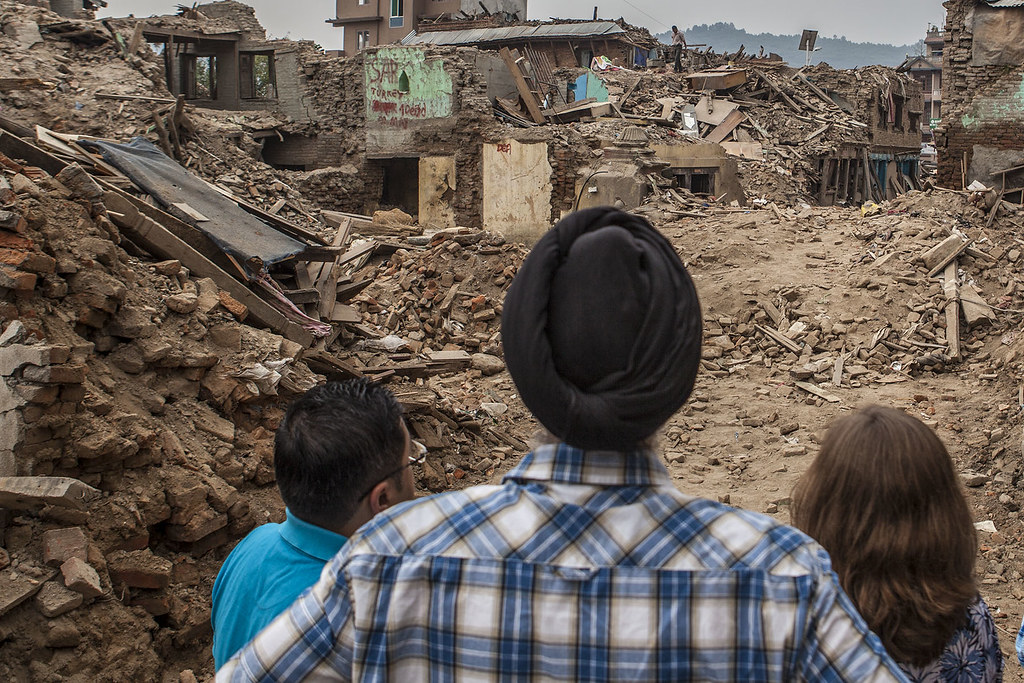Introduction
Earthquakes are one of the most devastating natural disasters, causing significant loss of life, property, and infrastructure. When an earthquake strikes, the immediate impact is often catastrophic, leading to mass evacuations and displacements. This article explores the experiences of people who fled from earthquake-affected areas, examining their challenges, coping mechanisms, and the support systems in place to assist them. By delving into various aspects such as the psychological impact, social dynamics, and rehabilitation efforts, we aim to provide a thorough understanding of the plight of earthquake survivors.
The Immediate Impact of Earthquakes
The Nature of Earthquakes

Earthquakes occur due to the sudden release of energy in the Earth’s crust, creating seismic waves that can cause widespread destruction. The magnitude and intensity of an earthquake determine its potential for damage. High-magnitude earthquakes can level buildings, create fissures in the ground, and trigger secondary disasters such as tsunamis and landslides.
Further Reading:
Initial Response and Evacuation
In the immediate aftermath of an earthquake, the primary focus is on rescue and evacuation. Emergency response teams work tirelessly to save lives, often facing significant obstacles such as blocked roads, damaged infrastructure, and aftershocks. Evacuation centers are set up to provide temporary shelter and basic necessities to displaced individuals.
Further Reading:
Challenges Faced by Earthquake Survivors
Psychological Impact

The psychological toll of surviving an earthquake can be immense. Many individuals experience post-traumatic stress disorder (PTSD), anxiety, and depression. The trauma of losing loved ones, homes, and a sense of security can have long-lasting effects on mental health.
Further Reading:
Social Dynamics and Community Support
Community support plays a crucial role in the recovery process. Social cohesion and solidarity can provide a sense of stability and hope. However, displacement can strain social networks, leading to isolation and loneliness. Rebuilding community ties is essential for long-term recovery.
Further Reading:
Economic Hardships
Economic challenges are significant for earthquake survivors. Loss of property, livelihood, and economic instability can hinder recovery efforts. Access to financial resources and employment opportunities is crucial for rebuilding lives.
Further Reading:
Coping Mechanisms and Resilience
Psychological Resilience

Psychological resilience involves the ability to adapt to adversity and stress. Coping mechanisms such as seeking social support, engaging in physical activities, and practicing mindfulness can help survivors manage stress and rebuild their lives.
Further Reading:
Community-Based Initiatives
Community-based initiatives are vital for fostering resilience. Programs that focus on rebuilding infrastructure, providing education and vocational training, and promoting social cohesion can enhance community resilience.
Further Reading:
Rehabilitation and Long-Term Recovery
Housing and Infrastructure
Rebuilding housing and infrastructure is a critical component of long-term recovery. Governments and non-governmental organizations (NGOs) often collaborate to construct earthquake-resistant buildings and restore essential services.
Further Reading:
Livelihood Restoration
Restoring livelihoods is essential for economic recovery. Programs that provide vocational training, microfinance, and employment opportunities can help survivors regain their economic independence.
Further Reading:
Health and Well-being
Access to healthcare and mental health services is crucial for the well-being of earthquake survivors. Mobile clinics, mental health support groups, and telemedicine services can address health needs effectively.
Further Reading:
Case Studies
Nepal Earthquake (2015)

The 2015 Nepal earthquake, also known as the Gorkha earthquake, caused widespread devastation, killing nearly 9,000 people and injuring over 22,000. The international community mobilized significant aid, but the challenges of reaching remote areas and rebuilding infrastructure were immense.
Further Reading:
Haiti Earthquake (2010)
The 2010 Haiti earthquake was a catastrophic event that killed an estimated 230,000 people and displaced over 1.5 million. The disaster highlighted the importance of international aid and the challenges of coordinating large-scale relief efforts.
Further Reading:
Japan Earthquake and Tsunami (2011)
The 2011 Tōhoku earthquake and tsunami in Japan was one of the most powerful earthquakes ever recorded. It triggered a massive tsunami that caused extensive damage and the Fukushima nuclear disaster. Japan’s response showcased its resilience and the effectiveness of its disaster preparedness measures.
Further Reading:
The Role of Government and NGOs
Government Initiatives

Governments play a crucial role in disaster response and recovery. Effective policies, resource allocation, and coordination with international bodies are essential for managing the aftermath of earthquakes.
Further Reading:
Non-Governmental Organizations
NGOs are instrumental in providing immediate relief and long-term recovery support. Organizations such as the Red Cross, Médecins Sans Frontières (Doctors Without Borders), and various local NGOs work tirelessly to aid earthquake survivors.
Further Reading:
Preparedness and Mitigation
Earthquake Preparedness
Preparedness measures can significantly reduce the impact of earthquakes. Public education, building codes, and emergency drills are vital components of earthquake preparedness.
Further Reading:
Mitigation Strategies
Mitigation strategies involve actions to minimize the long-term risks and impacts of earthquakes. These include land-use planning, retrofitting buildings, and improving infrastructure resilience.
Further Reading:
Conclusion
Earthquakes have profound and far-reaching impacts on individuals and communities. The experiences of people who flee from earthquake-affected areas highlight the importance of effective disaster management, community support, and long-term recovery efforts. By learning from past events and implementing comprehensive preparedness and mitigation strategies, we can build more resilient communities capable of withstanding future disasters.
Related Posts
- The Psychological Impact of Natural Disasters
- Economic Recovery After Natural Disasters
- Community Resilience in Disaster-Prone Areas
- Health Care Access Post-Disaster
This in-depth exploration of the experiences of people who fled from earthquake-affected areas emphasizes the need for robust disaster preparedness and comprehensive support systems to aid in recovery and resilience.
